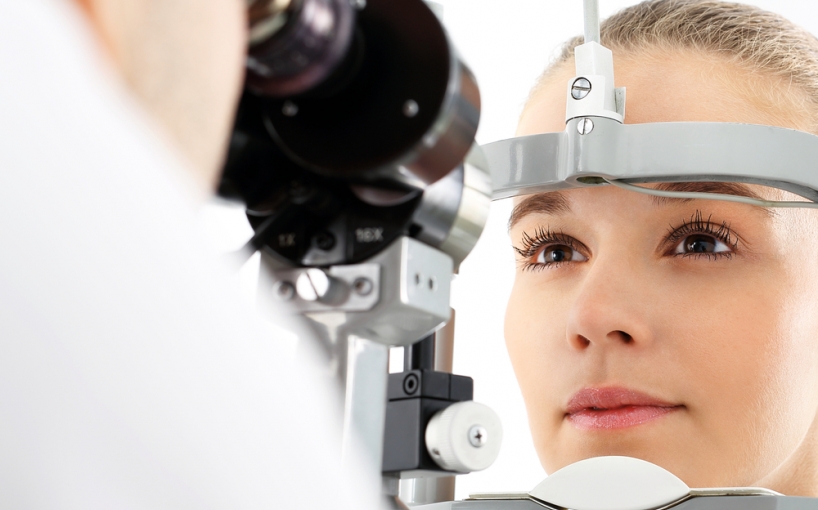What are benefits of Slit Lamp?Read 26,162

When you visit your eye doctor, she’s not just checking to see if you can read the third line on the eye chart clearly. She’s also making sure your eyes are healthy. To do this, many doctors use a “slit lamp.” It’s a special microscope and light that lets your doctor see your eyes in 3-D, both inside and out.
The slit lamp is several pieces of equipment combined into one device. It includes a binocular microscope on a base that moves in an arc, an adjustable light source, and a frame to rest your head on and hold it steady during the exam.
Your doctor has a lot of flexibility with the light. She can narrow and widen it, increase its brightness, and filter it with colors. By doing this, your doctor can focus on particular parts of your eyes and face.
Before the exam starts, you’ll be asked to remove your glasses or contact lenses. You’ll put your chin and forehead against rests to keep your head steady. Your doctor may also put a few drops of dye in your eyes to highlight things she wants to look at. She’ll then turn out the room lights and turn on the slit lamp.
During the exam, your doctor will look through the microscope, adjusting the light from the slit lamp to view certain parts of your eyes. Things she’ll look at:
1. Skin around the eye: Your doctor can check the area for skin diseases and abrasions.
2. Eyelids and eyelashes: Styes (oil gland infections), folliculitis(hair follicle infections), and tumors are some of the conditions your doctor will look for.
3. Surface of the eye: This includes the tissue under your eyelids and over the whites of your eyes. These areas can be swollen or infected. This can be caused by sexually transmitted diseases, allergies, or viruses
4. Sclera: This is the protective outer layer of the eyeball. Next to the sclera is the episclera, which helps keep it healthy. These areas can get diseases related to allergies, autoimmune disorders (where the body attacks itself), and gout (a type of arthritis).
5. Cornea: This is the layer of the eye that helps focus your vision. A slit-lamp exam may show your cornea isn’t as clear as it used to be. A number of things can cause your vision to blur.
6. Iris: This is the colored disc that surrounds the pupil and changes to allow more or less light into your eye. It can be affected by a variety of diseases and conditions, including (in rare cases) tuberculosis, leukemia, and even forms of arthritis.
7. Lens Cataracts (a clouding of the lens) are diagnosed by examining this part of the eye. It’s located behind the pupil.
In addition, when the slit lamp is coupled with a special magnifying lens, your doctor will be able to view the retina and the optic nerve located in the back of your eye. Before doing this exam, he’ll dilate your pupils with eye drops.
Looking at the retina and optic nerve can help your doctor figure out if you have glaucoma or if diabetes is affecting your eyes. The examination may also show anemia (low levels of red blood cells), tumors, blood clots, and hardening of the arteries caused by high blood pressure.
If your exam reveals you may have a disease affecting other parts of your body, your eye doctor may recommend you see your regular doctor. If you have a specific eye condition, she may give you a prescription or suggest further testing.
cr. www.webmd.com
cr. www.webmd.com





